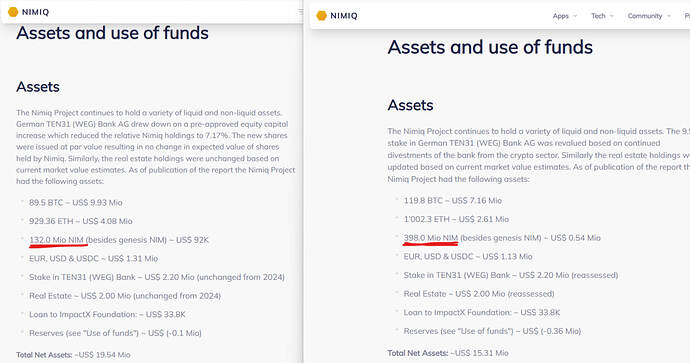Following the blogpost
Our top priority is to ensure that whatever we do serves the health of the Nimiq ecosystem and the NIM token.
I propose to gradually and irreversibly switch the entire Treasury from BTC and ETH into NIM and I suggest to vote this proposal on chain (similarly to supply curves we voted for).
Currently the Game Theory around this project is really not working.
And I mean at very bad levels.
Constantly be sitting on a totally different set of assets (BTC,ETH) doesn’t incentivize “greater good” behaviours and decisions, as you can easily make the case that Team members can privilege to lengthen the broth, to progress with their employment, careers, and payroll, where they never feel on their skin the consequences of good/bad decisions (including not taking any decision).
With the entire Treasury in Nim, we would be sure that Community and Team incentives are finally aligned, such that, if we win, we win together, if we lose, we lose together.
It may sound a risky move but in reality it isn’t, because if you don’t think NIM is worth BTC or ETH, we are just wasting everyone else time to begin with.
Anybody seeking exposure to BTC and ETH, would straight buy those assets on his/her own.
This is not like the old style “buy back program” that was proposed.
It’s a tactical shift in the Treasury.
From now on, Nimiq first and foremost.


 ?
?